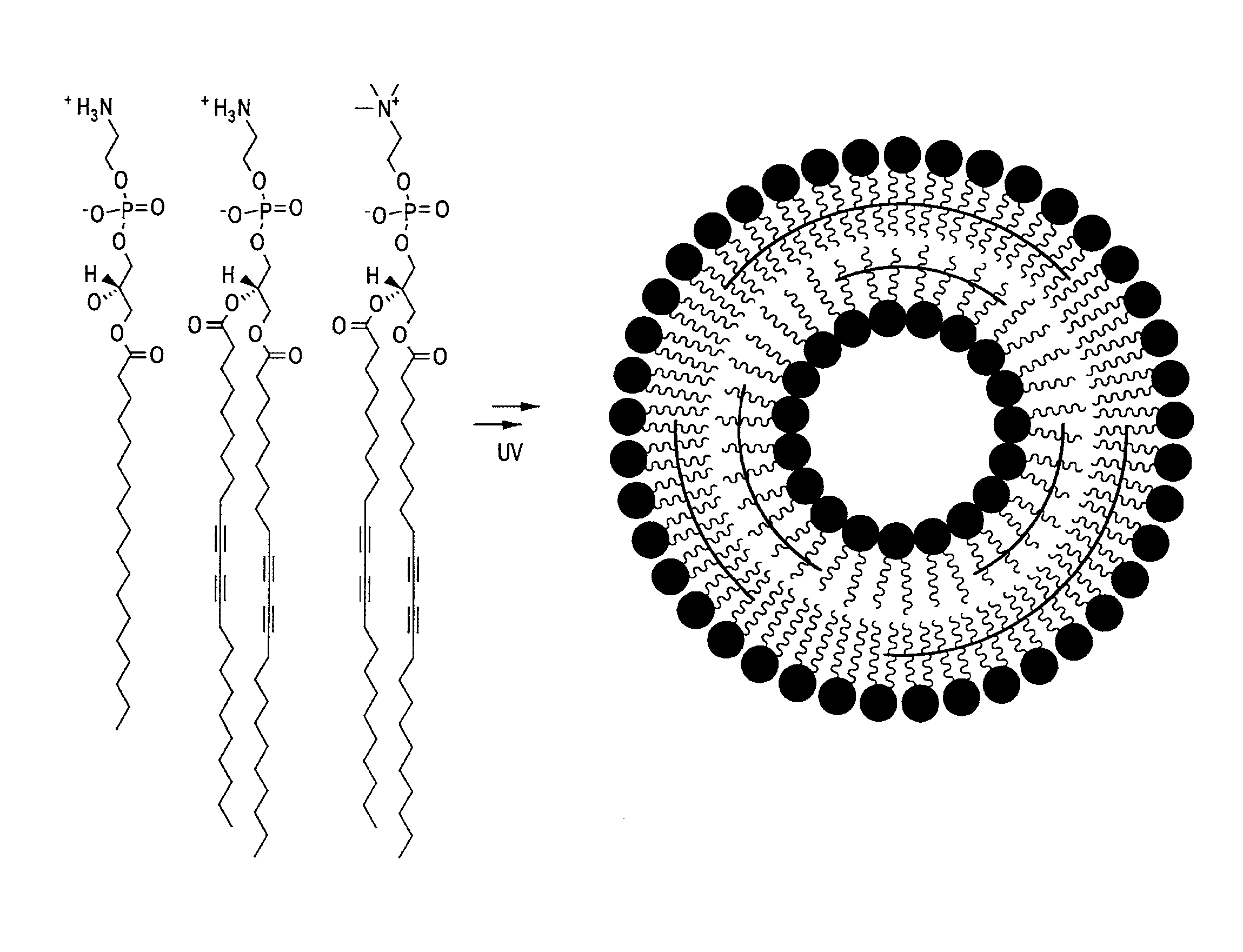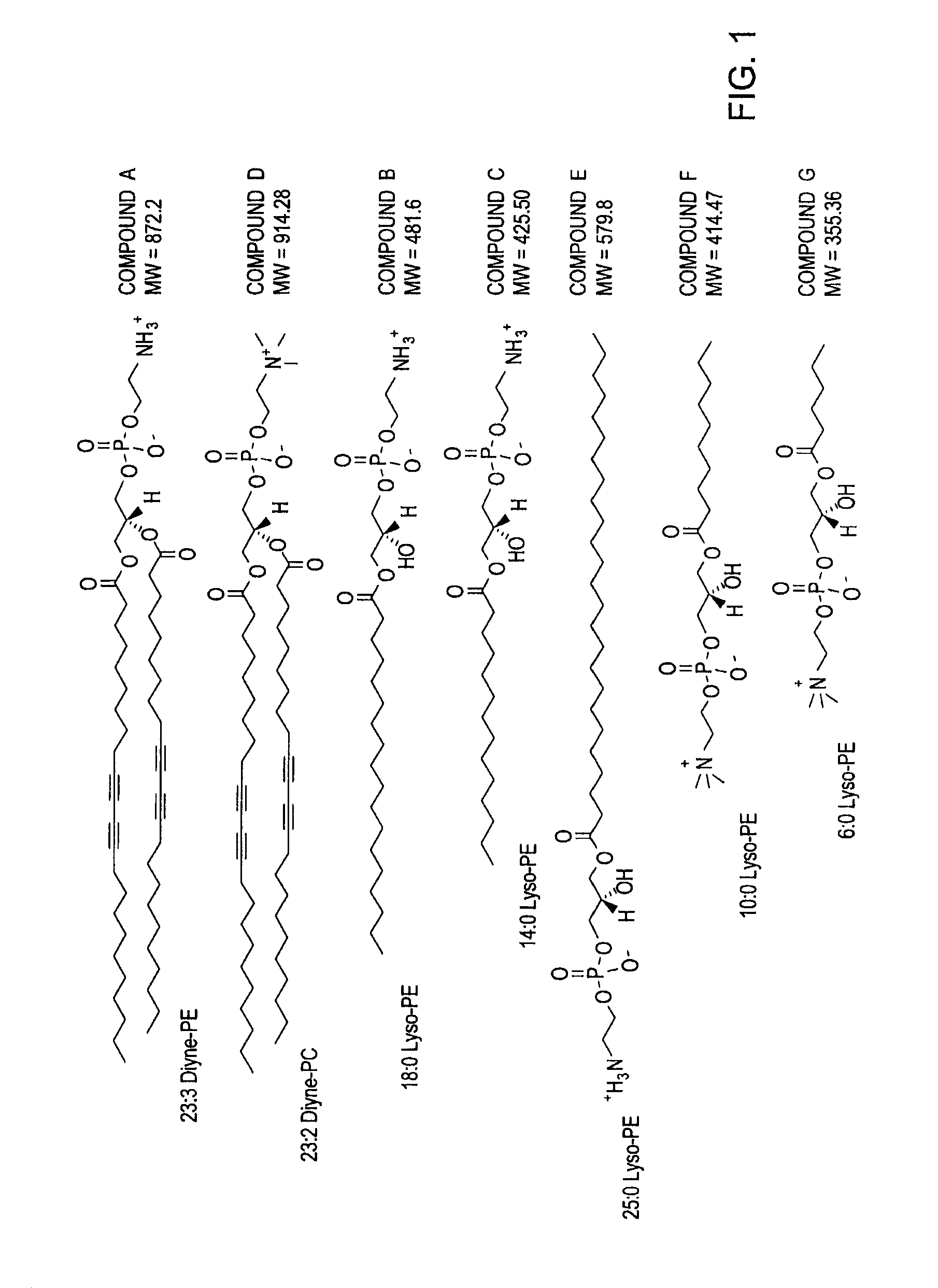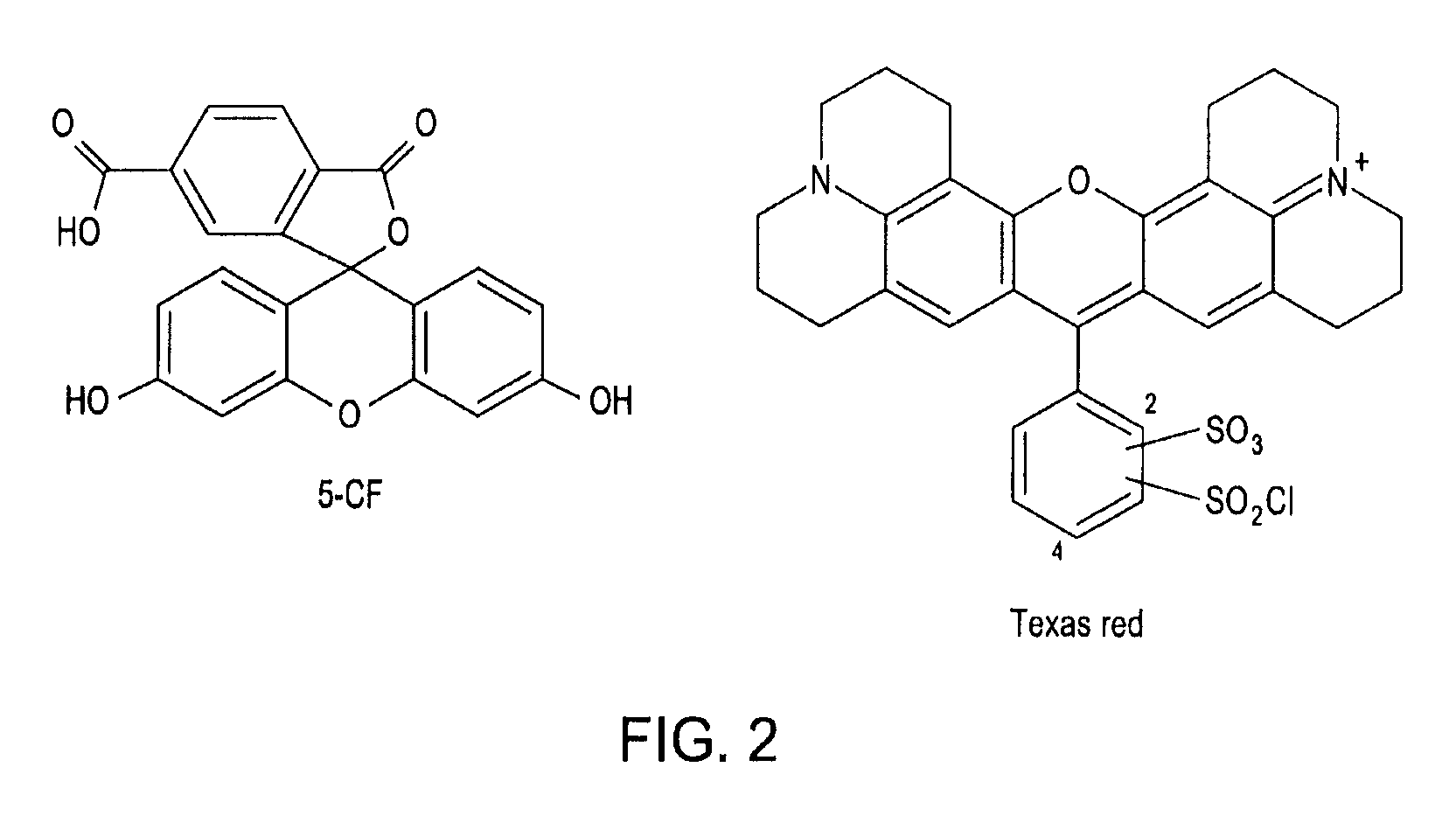Thermally-activatable liposome compositions and methods for imaging, diagnosis and therapy
a technology of liposomes and compositions, applied in the field of medicine and pharmaceuticals, can solve the problems of unsatisfactory in vivo drug delivery applications, unpredictable temperature control, and rapid release of liposomes, and achieve the effect of improving the delivery of therapeutic, diagnostic and/or prophylactic agents
- Summary
- Abstract
- Description
- Claims
- Application Information
AI Technical Summary
Benefits of technology
Problems solved by technology
Method used
Image
Examples
example 1
Preparation of Illustrative Liposome Compositions
[0172]Appropriate amounts of lipids were dissolved in chloroform or chloroform / methanol. The solvent was evaporated, and the residue was dried under vacuum while shielded from light. After the addition of fluorescent dye or radioactively-labeled molecules in PBS, the solution was sonicated to form a milky emulsion. The emulsion was transferred to a 10-mL Lipex extruder (Northern Lipids, Inc.) equipped with two stacked polycarbonate filter membranes having a pore size of 100 nm. The emulsion was then extruded a total of 11 times, then the solution was transferred onto Petri dishes maintained over ice, and irradiated at 254 nm for 1 hr with a Hoefer UVC 500 UVC crosslinker, yielding partially-polymerized liposomes. The liposomes were then purified with PD10 desalting columns and collection.
[0173]In an illustrative embodiment, a lipid composition was formulated to contain approximately 85% of 23:2 1,2-bis(10,12-tricosadiynoyl)-sn-glycero...
example 2
Thermally-Activatable Partially-Polymerized Liposomes
[0175]The following example describes a liposome composition that includes a mixture of polymerizable and un-polymerizable lipids, wherein the majority of the lipids (greater than approximately 60%) are of the polymerizable variety. Without being bound by theory, since the polymerizable lipids will form cross-links after exposure to ultraviolet light, liposomal formulations of this type are believed to be relatively stable at normal human body temperature. When exposed to moderate heating (e.g., greater than about 39° C. or 40° C.), however, the lipids will at least partially phase separate, thereby releasing the encapsulated imaging, prophylactic, or therapeutic agent. With the proper lipid composition, substantially all partially-polymerized liposomes can be made to “open” with moderate heating (i.e., “leak” to release their contents) and yet close when exposed to normal body temperature (or lower).
[0176]In this example, the the...
example 3
Thermosensitive Liposomes Comprising Radioactive Compounds
[0186]As shown in FIG. 19 when successively higher content of unpolymerizable lipid, the liposomes became less stable and more of the active ingredient was released at 47° C., and even to some degree, at 37° C. Similarly, in FIG. 20 it was shown that when successively higher content of unpolymerizable lipid was employed, the liposomes became less stable and more of the active ingredient was released at 47° C., and even to some degree, at 37° C.
PUM
 Login to View More
Login to View More Abstract
Description
Claims
Application Information
 Login to View More
Login to View More - R&D
- Intellectual Property
- Life Sciences
- Materials
- Tech Scout
- Unparalleled Data Quality
- Higher Quality Content
- 60% Fewer Hallucinations
Browse by: Latest US Patents, China's latest patents, Technical Efficacy Thesaurus, Application Domain, Technology Topic, Popular Technical Reports.
© 2025 PatSnap. All rights reserved.Legal|Privacy policy|Modern Slavery Act Transparency Statement|Sitemap|About US| Contact US: help@patsnap.com



